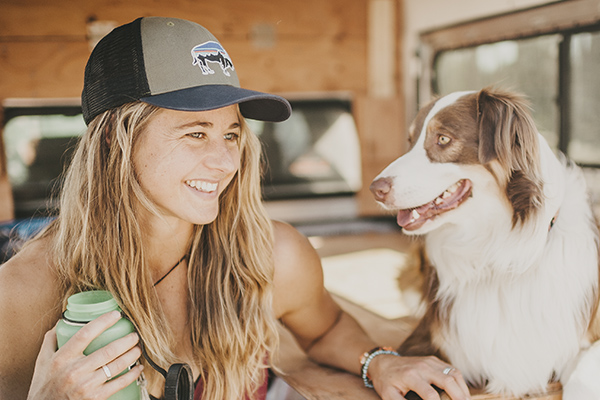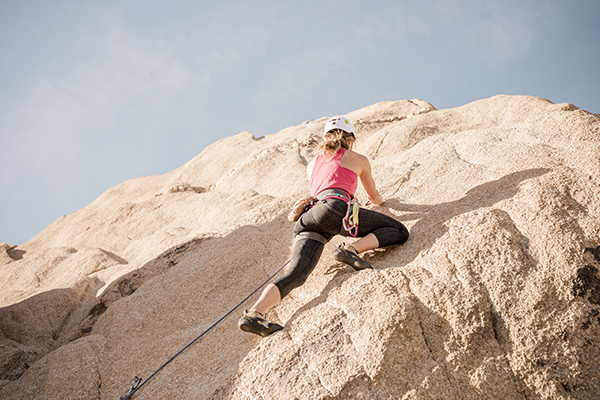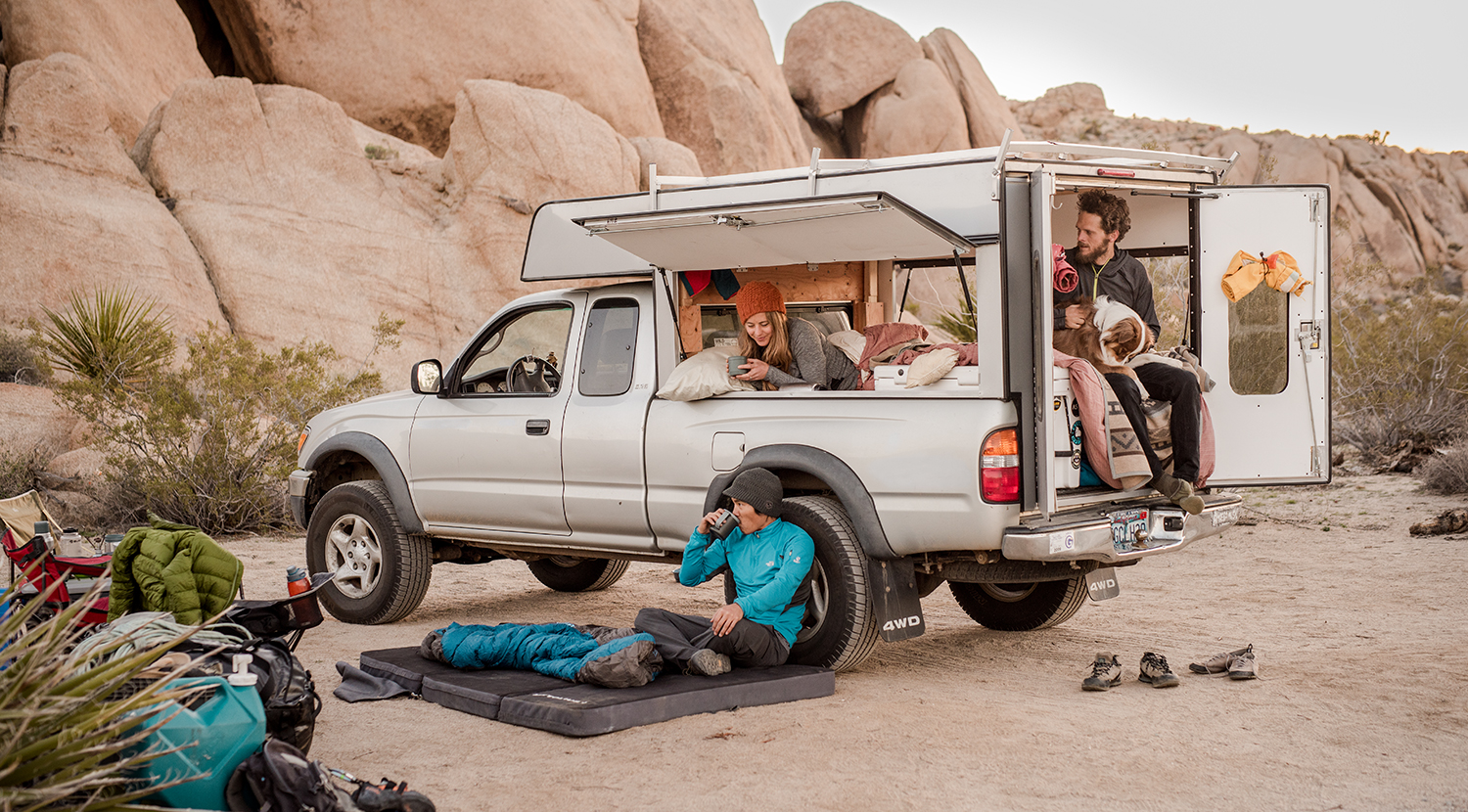One July morning in 2012, Maggie Crawford stood at the summit of Thunderbolt Peak in the Sierra Nevada. She may as well have been at the top of the world. Then 23, she had set out to break the California 14ers record for fastest female ascent; her plan was to climb all 15 14,000 ft. peaks in five days. Thunderbolt was the first.
In an interview with Outside magazine, Maggie said she was most excited about the Palisade Traverse: “It’s fun, technical climbing, but at the same time it’s super scary. You cannot fall.” For an athlete who thrives on challenge, it was fitting that she took on the hardest peaks first. But as Maggie paused to celebrate at the top of Thunderbolt that day, she was not quite as invincible as she felt. The diabetes that ran in her family was about to catch up with her, and it would turn out to be her toughest challenge yet.

Maggie grew up in the Bay Area, where her family raised chickens and planted tress in the canyon, and her parents took her backpacking, skiing and to the beach. Her soccer coaches put her in midfield so she could run off her boundless energy, which got her into track. By high school, she was running half-marathons. At the University of California, Berkeley, she joined the triathlon team.
It was only when Maggie discovered backcountry skiing that the blurred landscape of her life began to slow and take clearer shape. “It kind of switched my brain from this triathlon mode where I wanted to go really fast all the time to mountain exploration mode, where you’re looking at what’s around you,” she says.
Maggie started climbing in New Zealand, where she moved with her boyfriend Timbo Stillinger right after college. Their plan was to ski, but the snow wasn’t very good, so they bought ropes, befriended some salty old climbers in the community, and checked out all the books about rock climbing in the library. They were hooked right away.
For the next nine months, Maggie and Timbo lived in a 1988 Toyota camper van named Sir Edmund Hillary, which Maggie, feeling the van was a girl, shortened to just “Hillary.” It had a cook stove and a single bed—Maggie would often wake up on the floor—and it was all they needed. The goal was to survive on 69-cent cans of baked beans for as long as possible. “We’d go into town once a month and fill up on beans and canned vegetables and peanut butter, and that’s what we ate,” Maggie says. “We wanted to never go home.”
She says she never missed any creature comforts. For her, the bigger challenge was learning a sport that tested her more than anything ever had, in part because it was so stationary. “You can stay in the same place all day, and work your fingers to the bone, and you haven’t even gone anywhere,” she says. “I think it’s the irony of that sport.” She also liked the mental challenge. “I’ve always been an obsessive jigsaw puzzler,” she says. “With trad climbing, there are so many puzzles going on at once.”
Eventually, and maybe inevitably, Maggie grew restless. She still wasn’t tired of beans, but she craved new challenges and intellectual stimulation. “It definitely wasn’t something I expected. You’re in the most beautiful place in the world. To be missing something seems wrong, or not really possible.” Also, the snow was really great back home.

In California, Maggie and Timbo traded the van for a truck that they outfitted with a custom-made external shell and wood compartments that Timbo built to stash their gear. For the next year, they lived in the truck and did what Maggie calls the “California circuit.” They’d climb at Joshua Tree, then go to San Diego to surf, then climb at Yosemite and Truckee, then go to the Eastern Sierras to climb and ski, then back to start it all again.
During that time, Maggie discovered speed mountaineering. “When you’re deep, deep in the mountains and completely self-sufficient, that’s what I really got excited about,” she says. She became determined to set the California 14ers record.
That’s how Maggie found herself at the summit of Thunderbolt Peak on the first day of her 2012 record attempt, feeling good and ready to take over the world. By the third day, she had bagged eight peaks. But on the fourth, catastrophe struck: she got so sick that she could hardly crawl out of bed. She made it halfway up Mt. Whitney that day before she had to abandon the mission. Her stomach problems and a vague illness persisted, though. “For the next six months or so, I felt off,” she says.
In spite of that, she signed on for another physical challenge: the National Outdoor Leadership School (NOLS) instructor training course. “It was four weeks of snow camping with like 80lb packs and horrendous conditions,” Maggie says. Everyone was hungry, but Maggie was literally starving. Her lingering, mysterious illness would soon be diagnosed as type 1 diabetes, which meant she couldn’t produce the insulin needed to turn glucose into energy. “My body couldn’t actually use any of the food I was eating,” she says. “It broke down my fat stores; it broke down my muscle stores. It was a joke on the course that I ate the most, like more than all these big guys. I was just ravenous.”
NOLS hired her to work a course in Northern Wyoming, and though she says she was “like a skeleton,” she went ahead with that too. Three weeks in, she started forgetting her students’ names, which scared her. She decided to evacuate herself. She used the satellite phone to call NOLS, then walked 20 miles to the nearest trailhead for a ride.
When Maggie got back to California, she went to see a doctor who listened to her laundry list of symptoms and ordered blood tests. He didn’t tell her what he must have suspected; they would wait for the results.
Meanwhile, she started to feel a curious nesting impulse. Now she wanted those creature comforts. “I was like Oh, thank God,” she says. “I feel like buying some stuff.” It was Saturday, so she and Timbo went garage-sale shopping. They were lugging a grand piano into the house when Maggie checked her phone and got the news. Her doctor informed her that she had diabetes, and her blood sugar was dangerously high. She was to drink lots of water, not eat any carbohydrates, and come to his office at 6am on Monday.
Maggie was stunned. “I felt really crappy, and I was scared,” she said. She spent the next few weeks trying to bring her blood sugar down, which often left her crying in a cold sweat on the floor. “I’d lost a lot of my climbing muscles,” she says. “You kind of re-learn how to do stuff.” Maggie had crashed hard, but she wasn’t giving up.
At UC Berkeley, Maggie had studied nutrition and physiology. With her educational background and trial and error, she began to piece together the ultimate puzzle: how to manage diabetes as a climber. Now she eats a vegan diet, runs every morning, and climbs or surfs in the evening. She has learned how to keep herself balanced. Even so, climbing remains especially challenging. “The hardest part I have is in the mountains, if I’m out for a lot of days in a row, managing that stress on my body,” she says.
When she first started climbing as a diabetic, Maggie had to stop to prick her finger every so often to see if she needed to eat or give herself an insulin shot. But new technology called a continuous glucose monitor has been a game-changer for her. “It sits in my skin, so I wear it all the time,” she says. Every five minutes, it transmits a blood sugar reading to a handheld device. “That makes climbing so awesome,” she says.
Maggie still hopes to set the California 14ers record, but she has other goals now, too. She’s getting her PhD at UC San Diego so she can help other diabetics, and at the end of each quarter, she’ll run an ultra, or summit the three highest peaks in southern California in a day. “I feel like I’ve learned how to incorporate climbing and running in a really chill way into my life,” she says.
She is definitely more grounded. She and Timbo are now married, and home is a condo in Encinitas, where Maggie grows tomatoes on the porch. There are always friends around for barbecues on the beach. “When I got diabetes, I realized that things can be permanent,” she says. That doesn’t mean she’s done with living in a truck, though. Almost every weekend, she and Timbo hop in the truck with their dog, Muir, and head out to Joshua Tree or the Eastern Sierras to camp and climb. Maggie loads up the Yeti with fresh fruit and vegetables, and makes sure that she’s eating well. Likely there are cans of beans involved.
Climbing mountains will always be more complicated for Maggie than it is for others, but she considers her diabetes a gift. “It’s an opportunity to take better care of myself and be more creative,” she says. She still feels the most at ease in motion, the most at home running a trail or surfing in the ocean. She still lives for the next adventure, and laughs when she remembers the people who told her she’d have to stop climbing as a diabetic. That has only made her more determined to keep going, and more grateful that she can. “There are a lot of adventures,” she says. “I’m always happy I’m alive.”
How do you create a basecamp? Share in the comments below.
